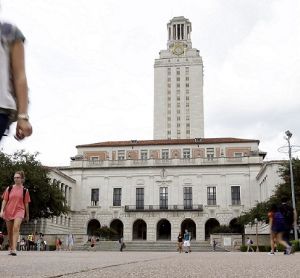
Washington, October 9: That American degree you so coveted and was unattainable because of high costs may not be so out of reach after all. Some US colleges have taken the first tentative steps to beat down soaring tuition fees by proposing a $10,000 (about 5.3 lakh) degree that also takes aim at the nearly trillion dollar college debt that the country has racked up.
The drive towards the $10,000 college degree will gee up students from India, more than 100,000 of who are enrolled in US colleges any given year. Although most Indian students come to the US for graduate studies, more and more are enrolling for four-year undergraduate degree, which some 10 Texas colleges are proposing to offer for as little as $10,000. Typical cost for a four-year undergraduate degree in a modest college for in-state US residents is around $30,000 ( 16 lakh).
But Indian parents, the wealthier among who are sending their children to four-year undergrad colleges after their Class 12, can rack up more than $100,000 enrolling in elite US institutions.
Higher education such as law degrees or two-year MBA degrees from top-ranked schools cost anywhere from $80,000 to $150,000.
While elite institutions and higher degrees may not feel the immediate effect, the first shot across soaring tuition fees in America has been fired by 10 modest Texas schools, following a challenge from the state governor Rick Perry to bring down costs. The 10 schools account for nearly 50,000 students, roughly 10% of undergrads at public universities in the state, according to the Wall Street Journal, among several outlets that described last months developments in this area.
First off the block is Angelo State University, a 7,000-student school in San Angelo in West Texas, which announced last week that it will offer a $10,000 degree starting next fall. Various schools of Texas Tech, Texas A&M University, and University of Texas have said they will follow suit. "A $10,000 degree provides an opportunity for students to earn a low-cost, high-quality degree that will get them where they want to go in their careers and their lives," Texas Governor Rick Perry, who ran unsuccessfully for the Republican nomination for President, said in a statement.
Not everyone is chuffed about the development. Some have argued that the quality of education will suffer. Others have spoken of fudged numbers, with suggestions that the $10,000 target does not include variables such as campus housing and text books. Fee lowering has been attained in some cases by proposing expansion in the size of class rooms, shifting some courses online, and use of adjunct faculty who will be paid on a per-class basis.
Nevertheless, the drive to lower costs points to growing recognition in the US that education is going beyond the reach of poor and middle-class families, and students often enter the job market with a massive debt burden -- a model India is also adopting with growing privatization of education. Both Republicans and Democrats have made this a talking point. Recent reports have shown that Americans owe nearly $1 trillion in student loans, substantially more than the $700 billion they owe in credit card debts.








Comments
Add new comment